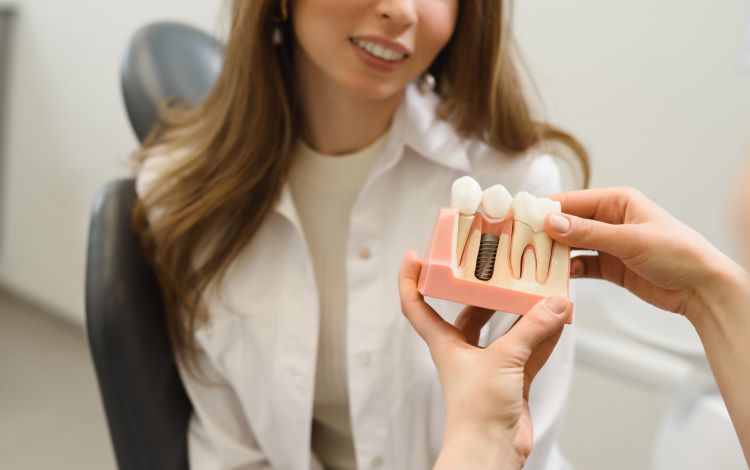Revolutionizing Dental Implants: The No-Surgery Solution
Dental implants have long been the gold standard for replacing missing teeth, offering a permanent and natural-looking solution. However, traditional implant procedures often involve invasive surgery, lengthy healing times, and significant discomfort. Enter the game-changing world of no-surgery dental implants – a revolutionary approach that's transforming the field of dentistry. This innovative technique promises to deliver the benefits of dental implants without the drawbacks of conventional surgery, making it an attractive option for those seeking a simpler, less invasive tooth replacement solution.

What are no-surgery dental implants?
No-surgery dental implants, also known as minimally invasive implants, are a cutting-edge alternative to traditional dental implant procedures. This innovative approach uses advanced technology and techniques to place implants without the need for extensive surgical intervention. Unlike conventional methods that require incisions in the gum tissue and drilling into the jawbone, no-surgery implants are inserted through small openings in the gum, minimizing trauma to the surrounding tissues. This technique not only reduces discomfort but also significantly shortens the healing process, allowing patients to enjoy their new teeth sooner.
How does the no-surgery dental implant procedure work?
The no-surgery dental implant procedure is a marvel of modern dentistry, combining precision technology with minimally invasive techniques. First, detailed 3D imaging of the patient’s mouth is conducted to create a precise map of the jawbone structure. Using this information, a custom-designed implant is fabricated to fit perfectly into the existing bone without the need for extensive preparation. The implant is then carefully inserted through a small opening in the gum using specialized instruments. This technique eliminates the need for traditional surgical flaps and sutures, resulting in less post-procedure swelling and discomfort. The entire process is often completed in a single visit, with many patients able to resume normal activities almost immediately.
What are the benefits of choosing a no-surgery dental implant solution?
Opting for a no-surgery dental implant solution offers numerous advantages over traditional implant procedures. Firstly, the minimally invasive nature of the technique means significantly reduced pain and discomfort during and after the procedure. Patients often report feeling little to no pain, with many able to return to their normal routines within a day or two. The absence of extensive surgery also means a lower risk of complications such as infection or prolonged bleeding. Additionally, the no-surgery approach preserves more of the natural gum tissue and bone structure, leading to better aesthetics and long-term oral health. Perhaps most appealingly, the shortened treatment time and reduced number of appointments make this option more convenient and less disruptive to patients’ lives.
Who is a good candidate for no-surgery dental implants?
While no-surgery dental implants offer many benefits, they’re not suitable for everyone. Ideal candidates typically have good overall oral health and sufficient bone density to support the implant. Those with severe bone loss or certain medical conditions may still require traditional implant procedures or bone grafting before being eligible for the no-surgery option. Additionally, patients who smoke or have uncontrolled diabetes may not be ideal candidates due to increased risk of implant failure. A thorough evaluation by a qualified dental professional is essential to determine if this innovative approach is right for you. Factors such as the location of the missing tooth, the condition of surrounding teeth, and overall oral health will all be considered in making this determination.
How does the dental implant procedure compare to traditional methods?
The no-surgery dental implant procedure represents a significant advancement over traditional implant methods in several key areas. While both approaches aim to provide a stable, long-lasting tooth replacement, the no-surgery technique simplifies the process considerably. Traditional implants often require multiple appointments over several months, including separate surgeries for implant placement and abutment attachment. In contrast, the no-surgery method can often be completed in a single visit, with the implant and abutment placed simultaneously. Recovery time is also drastically reduced, with many patients able to eat normally and return to work the next day, compared to weeks of healing required after traditional surgery.
| Aspect | Traditional Implants | No-Surgery Implants |
|---|---|---|
| Procedure Time | Multiple visits over 3-6 months | Often single visit |
| Recovery Period | Several weeks | Minimal, often 1-2 days |
| Pain Level | Moderate to high | Minimal to none |
| Bone Grafting | Often required | Rarely needed |
| Sutures | Required | Not needed |
| Cost | Generally higher | Often lower |
Prices, rates, or cost estimates mentioned in this article are based on the latest available information but may change over time. Independent research is advised before making financial decisions.
While no-surgery dental implants offer numerous advantages, it’s important to note that they may not be suitable for all cases. Complex dental issues or severe bone loss may still require traditional implant techniques. However, for many patients, this innovative approach provides a simpler, more comfortable path to a restored smile. As with any dental procedure, consultation with a qualified professional is crucial to determine the best treatment option for your individual needs. The no-surgery dental implant solution represents an exciting development in dental technology, offering hope for those who have been hesitant about traditional implant procedures due to fear of surgery or lengthy recovery times.
This article is for informational purposes only and should not be considered medical advice. Please consult a qualified healthcare professional for personalized guidance and treatment.



